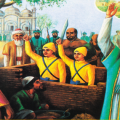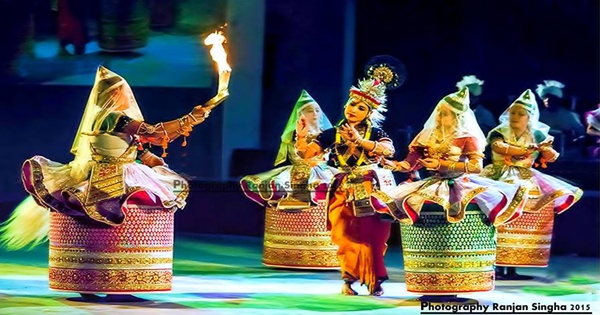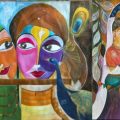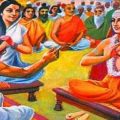Gulabo Sapera: From Being Buried Alive at Birth to Padma Shri Awardee; an Interview
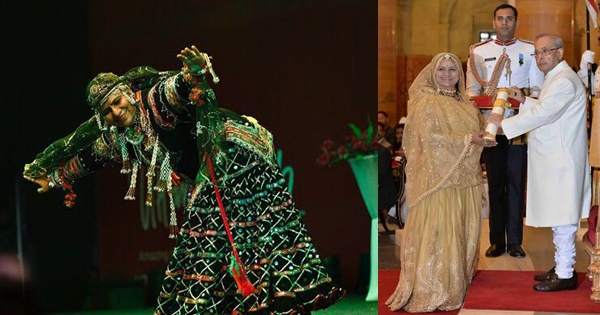
Gulabo Sapera! The very utterance of her name will ship you to the expanse of the nomadic Kalbeliya community. A celebrity folk artist, she conceptualized and choreographed the Kalbeliya folk dance of Rajasthan. This dance form soon received worldwide recognition. At the world stage, the legendary folk artist promoted the culture of Rajasthan in particular and India in general through the Kalbeliya dance. Due to her efforts, today Kalbeliya dance is an integral part of the Rajasthan ‘culture and tourism’ map.
A French composer and improviser called Thierry Robin (Titi Robin) regularly features Gulabo Sapera in his musical works. Robin and Véronique Guillien, a French author were so inspired by her journey of life that they wrote a book on her in French, called Gulabi Sapera, danseuse gitane du Rajasthan.
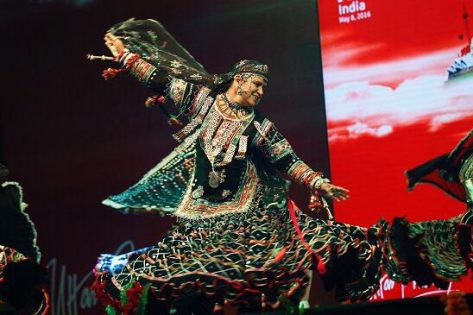
Big Boss Season 5 reality television show featured her as contestant No. 12 in 2011. For her contribution to Indian folk culture, especially Kalbeliya folk dance, the Government of India honored her with the Padma Shri, the 4th highest civilian award, in 2016, conferred by the President of India.
Here is an excerpt of an interview with Gulabo Sapera on her journey, taken by Manoshi Sinha, Editor of My India My Glory online magazine.
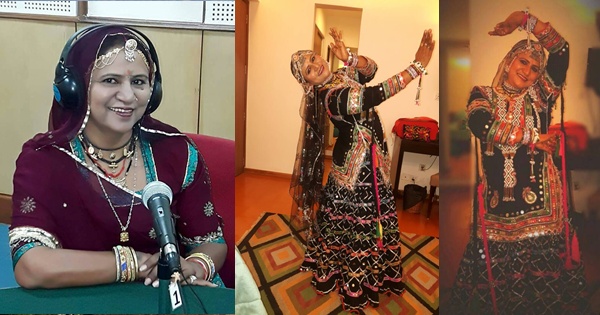
Manoshi Sinha: You were buried alive at birth. Can you please elaborate on this.
Gulabo Sapera: I was born in Ajmer in the Kalbeliya tribe. I was the fourth girl child. As I was a girl, the fourth burden to my family, community members pressurized my parents to bury me. They unwillingly buried me alive. At the behest of my mother, my mausi dug me out after six hours only to find me breathing. Maybe God wanted me to be live. I defeated death!
I was named Dhanvantri, but later people started calling me Gulabo.
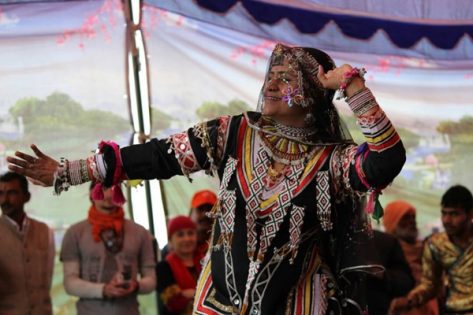
Manoshi Sinha: When did you start performing as an artist?
Gulabo Sapera: My father was a snake show performer. This was our family profession. We grew up dancing with the snakes. My father started taking me along with him from a very tender age for his snake shows on the roads. I started dancing like the snakes, a style, unique and unprecedented.
My maniacal passion for this dance only made me practice this form at isolated places in our area despite objections from my community.
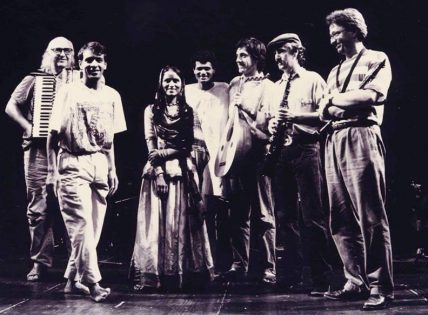
Gulabo Sapera with Titi Robin, Hameed and other artists in a concert in France in 1993; Pic Courtesy: Hameed Khan Kawa (percussionist and artistic director)
Manoshi Sinha: Any challenges you faced in your career as a folk artist from the start?
Gulabo Sapera: Yes, I faced a lot of challenges since my childhood days. My turning point in my dancing career was when I was performing with my community women in a fair at Pushkar. It was the year 1981. I was only seven years old. Few representatives of the tourism department noticed me; they were quite enthralled by the gyrations and suppleness of my dance.
They asked me to dance in front of a group of foreigners. Much to the displeasure of my community members, I danced and won enormous appreciation.
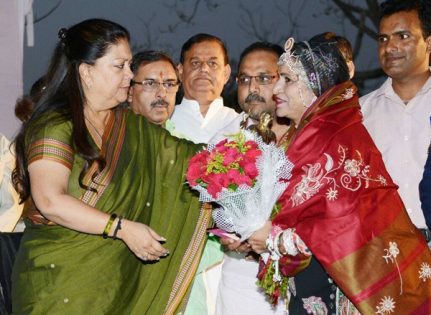
This public performance in front of foreigners enraged my community members. Infuriated, the community Panchayat slapped my family and declared social boycott. And we finally shifted place to Jaipur.
In 1985, I got an offer to join a culture crew for the USA. My community members opposed this heavily too. But I boldly overcame this opposition. On the day ahead of my departure to the USA, my father breathed his last. To give shape to my father’s and family’s dreams and to bring recognition to my community and art, I flew to the USA. I stayed in Washington, performing continuously for two months. Impressed by my dance form, my promoters there offered me to be a permanent resident and teach the folk art to interested students.
The then prime minister, Sri Rajiv Gandhi, on whose wrist I had tied a symbolic rakhi, intervened. I did not want to settle abroad, as I loved my India and wanted to teach this art form in my country. And I came back to India after completion of my performance. Since then, on every Rakhi day, I tied the holy thread on his wrist until he breathed his last.

Manoshi Sinha: Please tell us more about your overseas performances and your growth as an artist.
Gulabo Sapera: My first overseas performance in the USA gave wings to my career. I became an ambassador of the folk heritage of Rajasthan. I became the President of the ‘All India Kalbeliya Community’. Today I am treated like an institution with much respect. I won uncountable national and international awards over time.
I got appointed as a visiting faculty for numerous institutions in several countries including Denmark and France. Altogether, I visited 153 countries as faculty and as an artist.
Manoshi Sinha: Any social work that you are involved in and your future plans.
Gulabo Sapera: I am already working aggressively towards educating the girls and boys of my community. I have set up the GULABI SAPERA SANGEET SANSTHAN, a foundation involved in cultural development of Kalbeliyas and preserving the Sapera dance heritage. Under this foundation’s banner, I have been working tirelessly for the image makeover of my community.
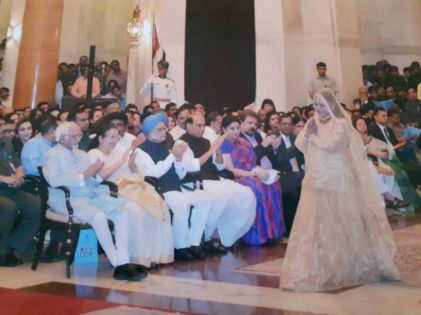
I wish to set up a dance school in Pushkar.
Manoshi Sinha: Were you featured in Rajasthani and Bollywood films?
Gulabo Sapera: Yes, I have featured in numerous Rajasthani and Bollywood films. Few Bollywood films worth mentioning are Ajooba, Faasle, Batwara, Kshatriya, and the list goes on.
I have also worked in several Hollywood movies. Far Family is worth mentioning here.
Manoshi Sinha: Please tell us about your family.
Gulabo Sapera: I am blessed with five children, two sons and three daughters. My eldest daughter Rakhi is an actor. She is taking this Kalbeliya folk art legacy forward. My other children Hema, Roopa, Dinesh, and Bawani are also involved in the same endeavor.
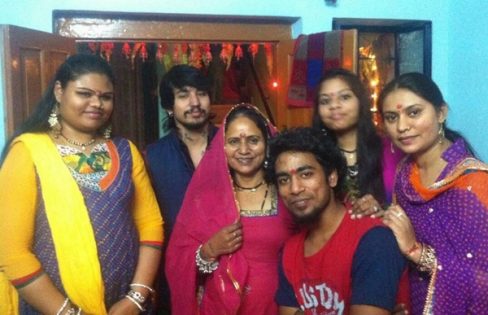
Manoshi Sinha: Your advice to save and preserve the Kalbeliya folk art of Rajasthan.
Gulabo Sapera: Every folk art should be preserved. They symbolize and glorify our rich culture, unique to regions.
I am teaching Kalbeliya folk art in India and abroad, so that it is saved and preserved. My children are also actively involved in preserving our rich folk culture.
Facebook Comments Box
The following two tabs change content below.


Manoshi Sinha is a writer, history researcher, avid heritage traveler; Author of 8 books including 'The Eighth Avatar', 'Blue Vanquisher', 'Saffron Swords'.

